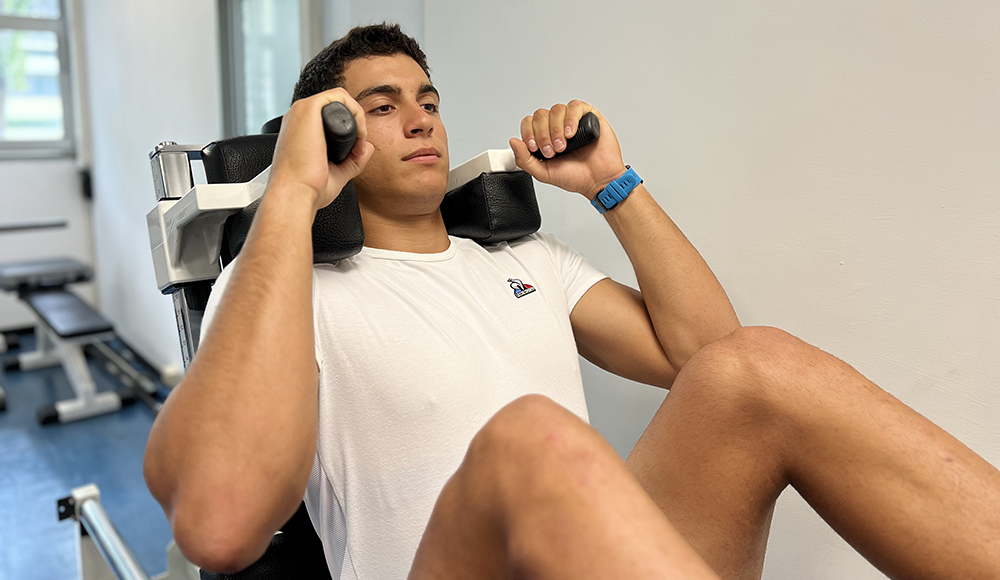The perfect balance between talented youngsters and more experienced athletes with celebrated careers. The Italian sailors gathered at CONI’s “Giulio Onesti” Olympic Preparation Centre for the CONI Institute of Medicine and Sport Science tests. In Rome, Giacomo Ferrari, Mattia Cesana, Carolina Albano, Alessandra Dubbini, Chiara Benini Floriani, Giorgia della Valle, Caterina Banti, Silvia Zennaro, Alexandra Stalder, Sofia Tomasoni, Jana Germani, Giorgia Bertuzzi, Riccardo Pianosi, Maggie Eillen Pescetto, Lorenzo Boschetti, Giulio Calabrò, Uberto Crivelli Visconti, Silvia Speri, Nicolò Renna, Giorgia Speciale, Lorenzo Brando Chiavarini, Manolo Modena, Marta Maggetti, Dimitri Peroni, Luca Di Tomassi, Sofia Giunchiglia and Giulia Schio underwent tests to monitor physiological parameters and with overloads on the lower limbs and kinetic chain, as well as anthropometric evaluations to establish their neuromuscular and physiological profiles. In August, the Azzurri had a great World Championships in Holland, where they managed to win two medals and qualify seven boats for the Olympic Games. “I am very satisfied with my season, while also aware that I could have done even better,” explains Riccardo Pianosi, who in addition to securing a pass for Paris 2024 at the world championship event also became European kite champion. “In addition to the national place for the Games, at the World Championships I would also have liked to have been on the podium, but on the last day of the competition I made a mistake which meant I finished fifth. The Olympics? It is the dream of a lifetime; I get a thrill just thinking about it. I want to make it a reality.” Also on the podium at the European Championships won in September by Pianosi in Portsmouth, Great Britain, was Lorenzo Boschetti, who finished third. “I started the year a bit slow,” says the kiter from Cesenatico, “then I got going with the fourth place at the Olympic Test Event in Marseille (Marseille Marina will stage the sailing competitions for Paris 2024, ed.), and I understood what I had to improve on to take an important step forward. The European bronze medal is a great confirmation of my ability in many ways. And the second place in the World Cup in Cagliari last week gives me even more confidence. I had a very good end to the season.” Only one of Boschetti and Pianosi will go to the Games next year: “All children who do sport with the ambition to achieve certain results dream of the Olympics. Just to be part of the national team and to be supported by CONI is a huge opportunity for me: I am already focused on the goal of participating in Paris 2024, I wake up every morning with the desire to go there and do well.” In the women's field, the competitor who secured the national spot for the Olympics in the kite was Maggie Eillen Pescetto: “I was born in Ireland but have always lived in Genoa. My dad is a sailor, my grandfather is a sailor and in general, taking into account our love for rugby, we are a family of sportsmen. When I was 13 I started kitesurfing with the aim of participating in the Youth Olympic Games (Buenos Aires 2018, ed), but I missed out.” Then came the turning point: “In 2019 the Federation introduced us to kitefoil, a new Olympic discipline. When I tried it I fell in love immediately: I like the speed, the fact that it doesn't all happen in three minutes but that everything is more thought out, studied. I like the way the races are run and I love the feeling I get on the board. There is still a lot to work on,” Pescetto continues, “but the great satisfaction of qualifying for Paris 2024 remains. It is very emotional to go back over the steps taken in these few years. We’ve got to keep pushing ourselves so we get to the Olympics in top form.” In this mission the relationship with CONI's Institute of Sports Medicine and Science is a big help: “We are happy that we can check on several parameters each year. It is essential to know how we are doing from a complete perspective: in this way we can set new benchmarks for training”.
- Etichetta IMSS CONI
Italian sailors at the CPO in Rome for testing, Pianosi: "Paris 2024? I get a thrill just thinking about it"
IMSS CONI

